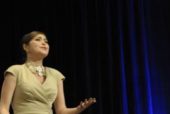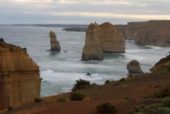North Korea’s Kim Jong-un arrives in Vietnam after 4,000km journey
Published on: February 26, 2019

North Korean leader Kim Jong-un has arrived in Vietnam ahead of a summit with US President Donald Trump.
The second US-North Korea summit follows a historic first round of talks last year in Singapore.
Ceremonial guards and flag-waving crowds had lined a red carpet laid out for him as he arrived at Dong Dang border station in the morning.
He then took a car in the capital city of Hanoi where heavy security and flag-waving crowds were waiting for him.
At Dong Dang security guards, officials and cameramen crowded Mr Kim and his party as they disembarked from the train and were ushered into a waiting car.
His trademark team of black-suited bodyguards were waiting for him at the station, and as his car pulled away they briefly ran alongside it.
He is thought to be travelling with his sister Kim Yo-jong and one of his key negotiators, former General Kim Yong-chol, both familiar faces from the last summit with Mr Trump.
Why did Mr Kim take a train to Vietnam?
The journey from Pyongyang to Vietnam took more than two days and traversed about 4,000 km (2,485 miles). Had Mr Kim chosen to fly to Vietnam he would have got there in a matter of hours.
As Mr Kim’s train passed through China, roads were closed and train stations shut down. Chinese social media was abuzz with road closures, traffic congestion and delayed trains.
Vietnam’s Dong Dang station was also closed to the public ahead of his arrival on Tuesday morning. He is now being driven around 170km (105mi) to Hanoi by car.
It’s little surprise that Mr Kim chose to take the train as this is how his grandfather, North Korea’s first leader Kim ll-sung, travelled when he went to Vietnam and Eastern Europe.
That alone would have made it a highly symbolic move for the younger Mr Kim.
Mr Kim’s private green and yellow train has 21 bulletproof carriages and is luxurious, with plush pink leather sofas and conference rooms so the journey would not have been unduly uncomfortable.
What will Trump and Kim do in Vietnam?
Unlike the North Korean premier, Mr Trump is travelling to Hanoi by plane. The presidential liner, Air Force One, has left Andrews Air Force Base in Maryland and is expected to arrive on Tuesday night local time.
Details of their schedule are only just becoming clear. Mr Trump will meet Mr Kim for a brief one-on-one conversation on Wednesday evening and then they will have dinner together with their advisors, according to White House spokeswoman Sarah Sanders. On Thursday, the leaders will meet for a series of back-and-forth meetings.
Why are they meeting again?
The Hanoi meeting is expected to build on the groundwork of what was achieved at the historic Singapore summit last June.
The Singapore summit produced a vaguely worded agreement, with both leaders agreeing to work towards denuclearisation – though it was never made clear what this would entail.
However, little diplomatic progress was made following the summit.
This time round, both leaders will be very conscious that expectations will be high for an outcome that demonstrates tangible signs of progress.
However, Mr Trump appeared to be managing expectations ahead of the summit, saying he was in “no rush” to press for North Korea’s denuclearisation.
“I don’t want to rush anybody. I just don’t want testing. As long as there’s no testing, we’re happy,” he said.
Washington had previously said that North Korea had to unilaterally give up its nuclear weapons before there could be any sanctions relief.
Why Vietnam?
It’s an ideal location for many reasons. It has diplomatic relations with both the US and North Korea, despite once having been enemies with the US – and could be used by the US as an example of two countries working together and setting aside their past grievances.
Ideologically, both Vietnam and North Korea are communist countries – though Vietnam has rapidly developed since and become one of the fastest growing economies in Asia, all while the party there retains absolute power.






